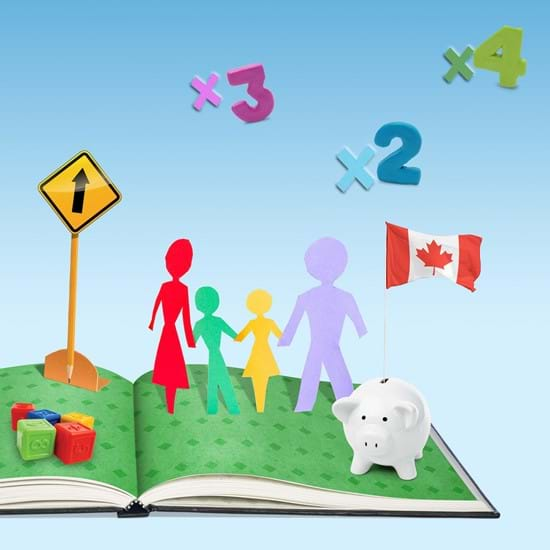
A Penny Saved is a Penny Earned! Teach your Kids Good Money Habits

Written by: Kaleido
Children and teenagers are not immune to our society’s consumer habits. They too want the latest electronic gadget and trendy clothes! To prevent your children from falling into the cycle of debt and show them the value of money, it is strongly recommended that parents teach their kids about the importance of saving early on in life. Here are some age-by-age tips to help you teach your children this lesson in a simple and pleasant way.
Buy a fun piggy bank
Buy a piggy bank you know your child will love and encourage him to use it. Pick a special spot, in plain view, to place the piggy bank and show your approval every time he drops some coins in the bank’s slot! Odds are he will do so with much pride.
Counting money
When your child turns four or five, it's time to start counting money! This will help him recognize the different coins and bills while practicing some basic math skills. Do it in a playful way or make a game of it (e.g.: pretend play grocery store) to make this educational activity even more fun for your child.
Managing an allowance
Opinions on this issue tend to vary, but if you decide to give your child an allowance, you can start as early as elementary school. Your child should also earn the money in exchange for a service rendered, contributing to the household chores, behaving exceptionally well on a given occasion, etc. Teach your child about the importance of saving this money; explain to him that with the sum accumulated each week, he will eventually have enough to purchase an item of his choice. Furthermore, teach your child that if spending isn’t necessary, it’s better to keep his money for a rainy day.
Sometimes it’s best to say no
When you go shopping, if your child throws a tantrum so you’ll buy him a new toy, resist and hold your end. Instead, suggest that he save his allowance and buy it himself. Your child will likely develop a greater appreciation for the value of money, and odds are he will also enjoy this toy more than one you purchased for him.
Open a bank account
When your child reaches nine or ten years of age, bring him to the bank to open his first bank account. Ask your financial advisor to play along and explain to your child the importance of his decision and to commend him for it. Your child will beam with pride!
Shop around & compare prices
Once your child becomes a teenager, encourage him to compare prices when shopping. For example, give your teen $150 to do the week’s grocery shopping and tag along; explain about weekly specials and sales, as well as the importance of not exceeding the established budget.
Savings, interest rates & credit
Teach your teenager the basics about savings (investment) and interest. Furthermore, inform him about advantages and disadvantages of credit. At the age of 18, if you feel that your young adult is ready, support him in his application for a student credit card and help him manage it to build good credit.
Establish a budget
Before your child moves into his first apartment, sit down and help him establish a budget. Be sure to identify all sources of income (part-time jobs, loans and bursaries, RESP educational assistance payments, etc.) as well as his various expenses (housing, groceries, utilities, cell phone, etc.) Explain the benefits that following this budget will have over the medium to long term.
Joint account
You and your teenager/young adult may also agree to open a joint bank account. This will allow you to track the account's credits and debits; and give your child the appropriate advice when things go wrong. This will also give you a heads-up on any spending problems your child may have and prevent him from falling into the debt trap.
By applying the tips described above, you will have the tools to teach your child about the value of money in addition to piquing your child’s interest in finance (at an early age). You can also encourage your child to develop his sense of generosity and explain the importance of “giving back”. To achieve this, different options are possible: make a donation during a telethon, sponsor a child, support a charity organism, etc.
Useful links:
Talk with our kids about money
What children should know when it comes to money

Discover #kaleidotogether, a collection of useful resources for families staying home.
Visit #kaleidotogether

